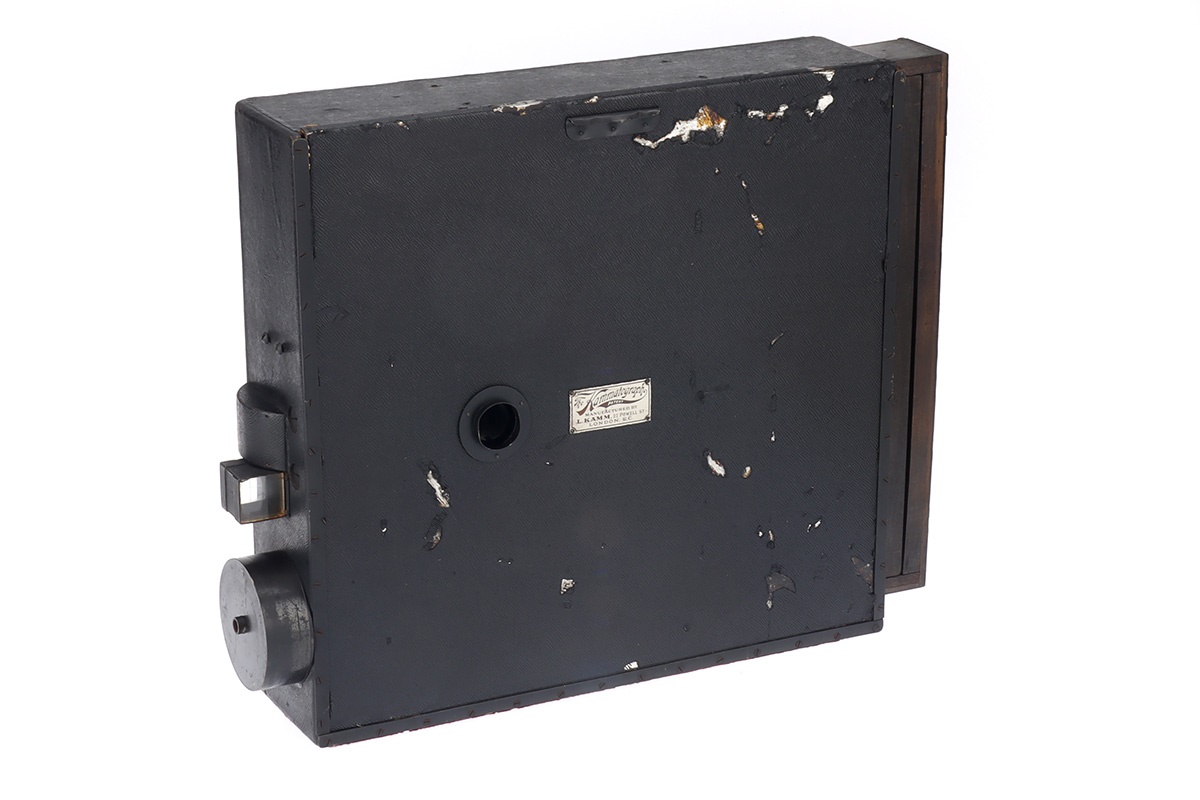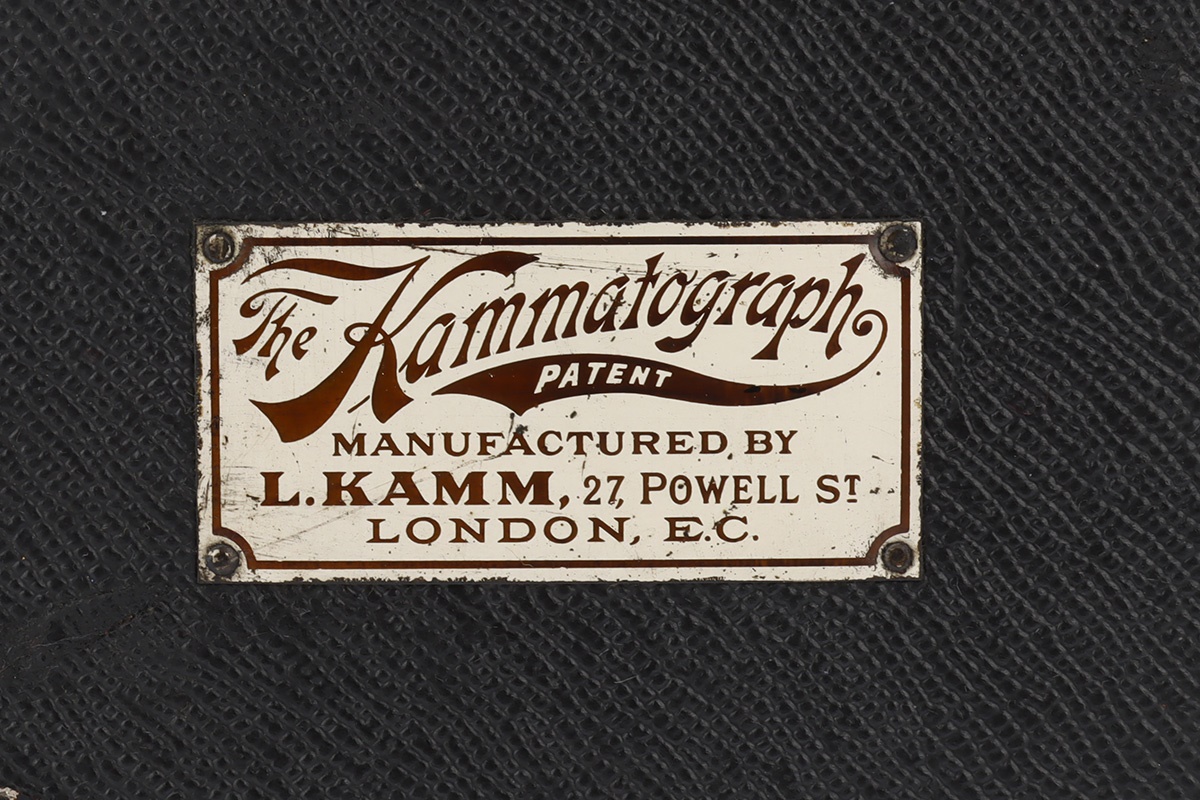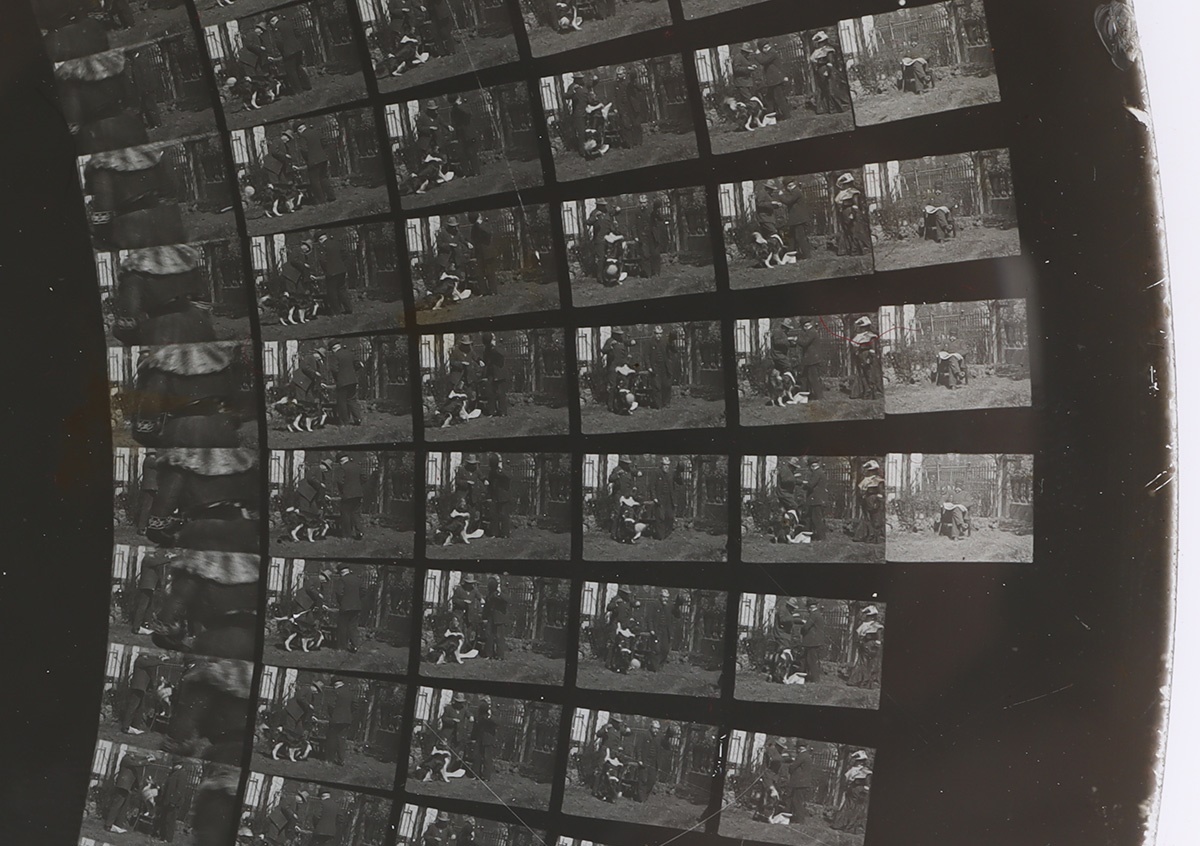

03/02/2023
Flints is to offer the first known example of a Kammatograph to be sold at auction. This combination camera-projector was patented by Leonard Ulrich Kamm in 1898 (BP 6515). Kamm (1861-1926), from Bavaria, Germany, who sought a solution for aspiring cinematographers to engage with filmmaking. He achieved this with the Kammatograph, as it did not require the specialist skills demanded of celluloid.

Instead, the Kammatograph made use of a glass disc with a diameter of 12 inches. The individual frames were set in a spiral arrangement onto the glass disc, which was rotated by a hand-crank. When in camera mode, the disc would be slowly rotated through the lens to expose the image onto the glass. The disc would then be processed in much the same way as the photographic plates of the time. When in projector mode, the Kammatograph could be used to display a 6-foot square image from a distance of 20-feet.

There were two models available, based on the number of images the user wanted. One model could capture 350 images, which would last 30 seconds. The other model would display smaller images but fit 550, which would last 45 seconds.

There are only three known Kammatographs currently in collections:
The Fox Talbot Museum Wiltshire:
https://www.nationaltrustcollections.org.uk/object/102423
The Science Museum Group:
The Bill Douglas Museum has the inner mechanism of the Kammatograph:
https://www.bdcmuseum.org.uk/explore/item/72595/